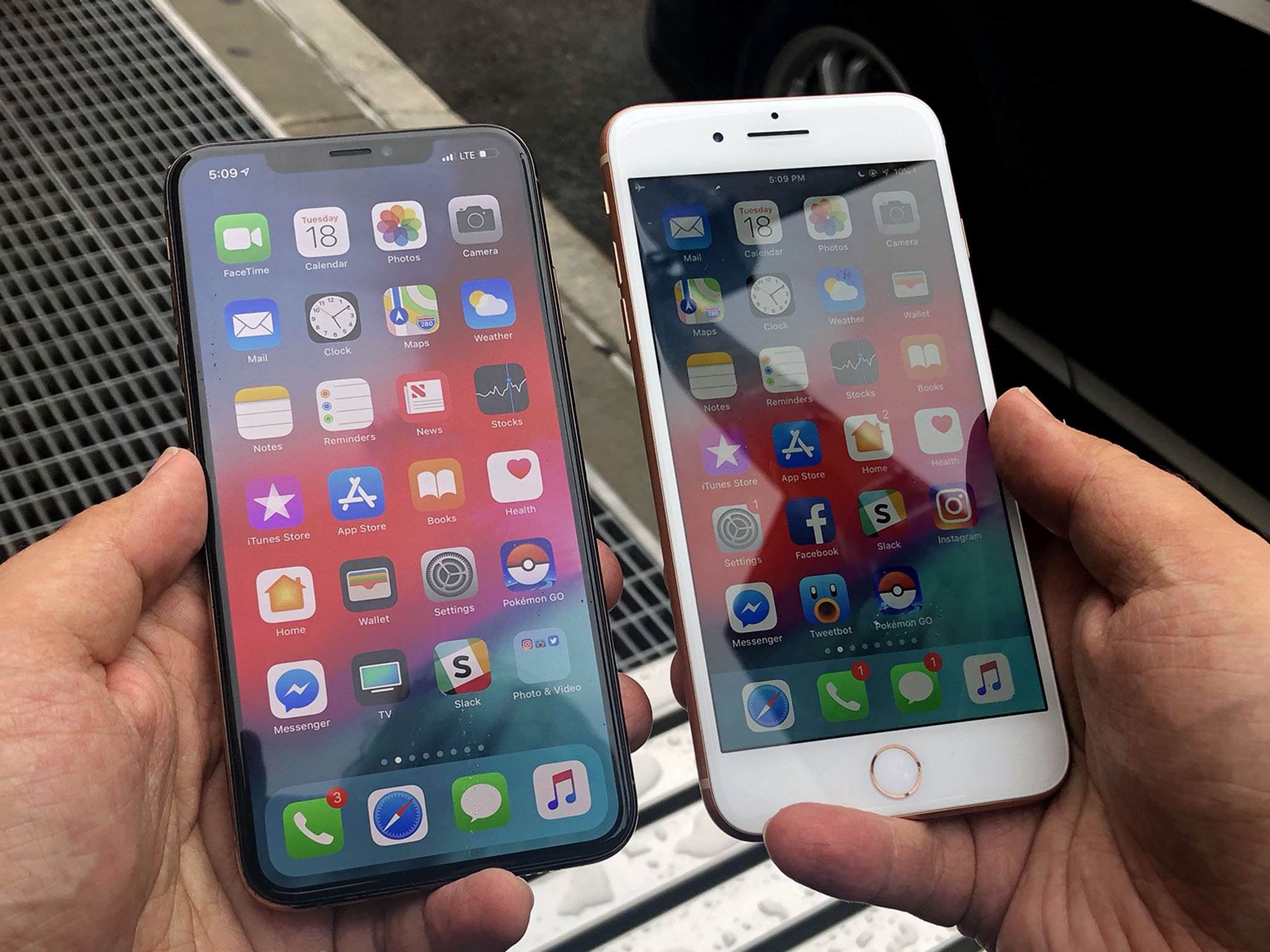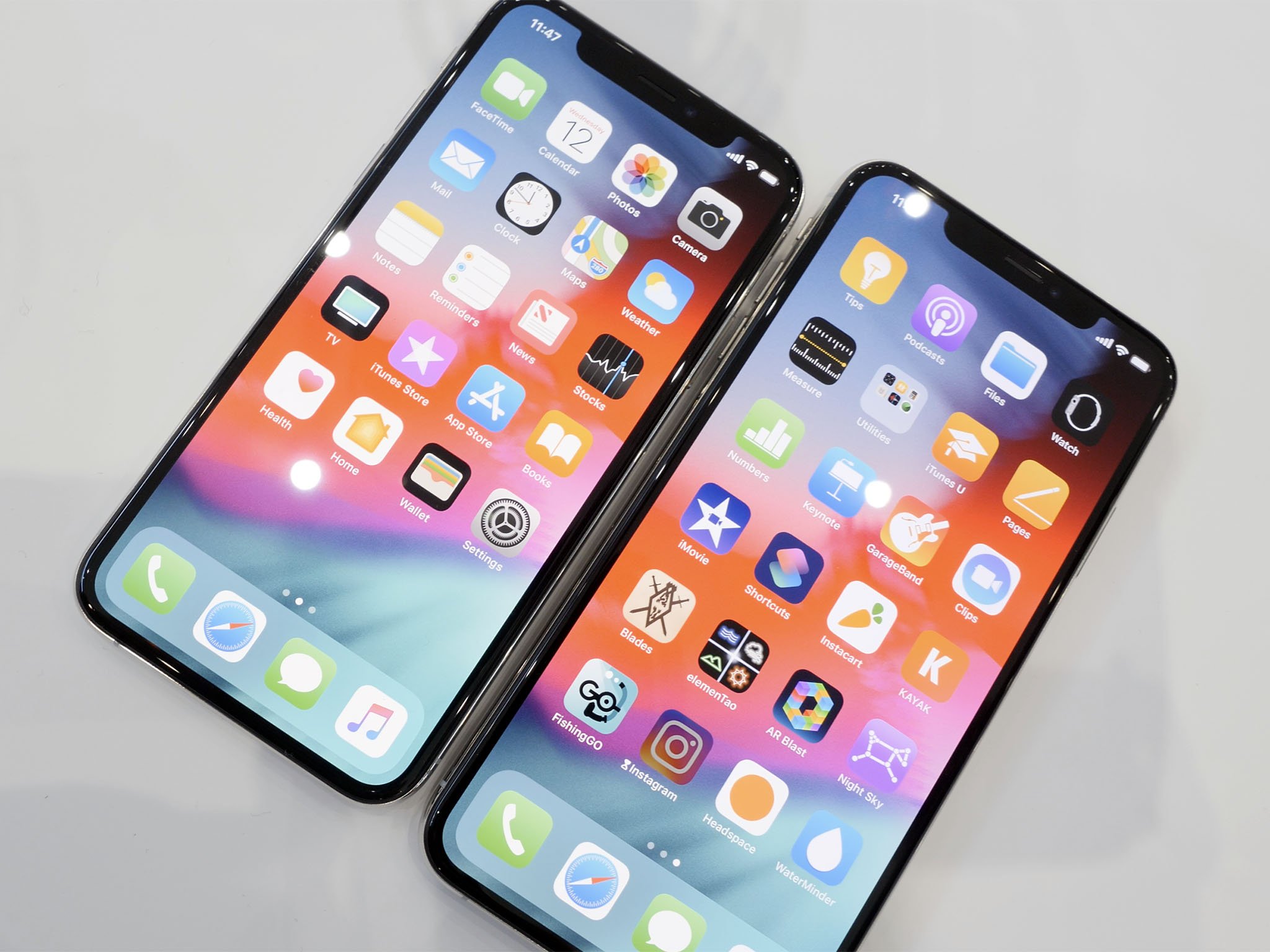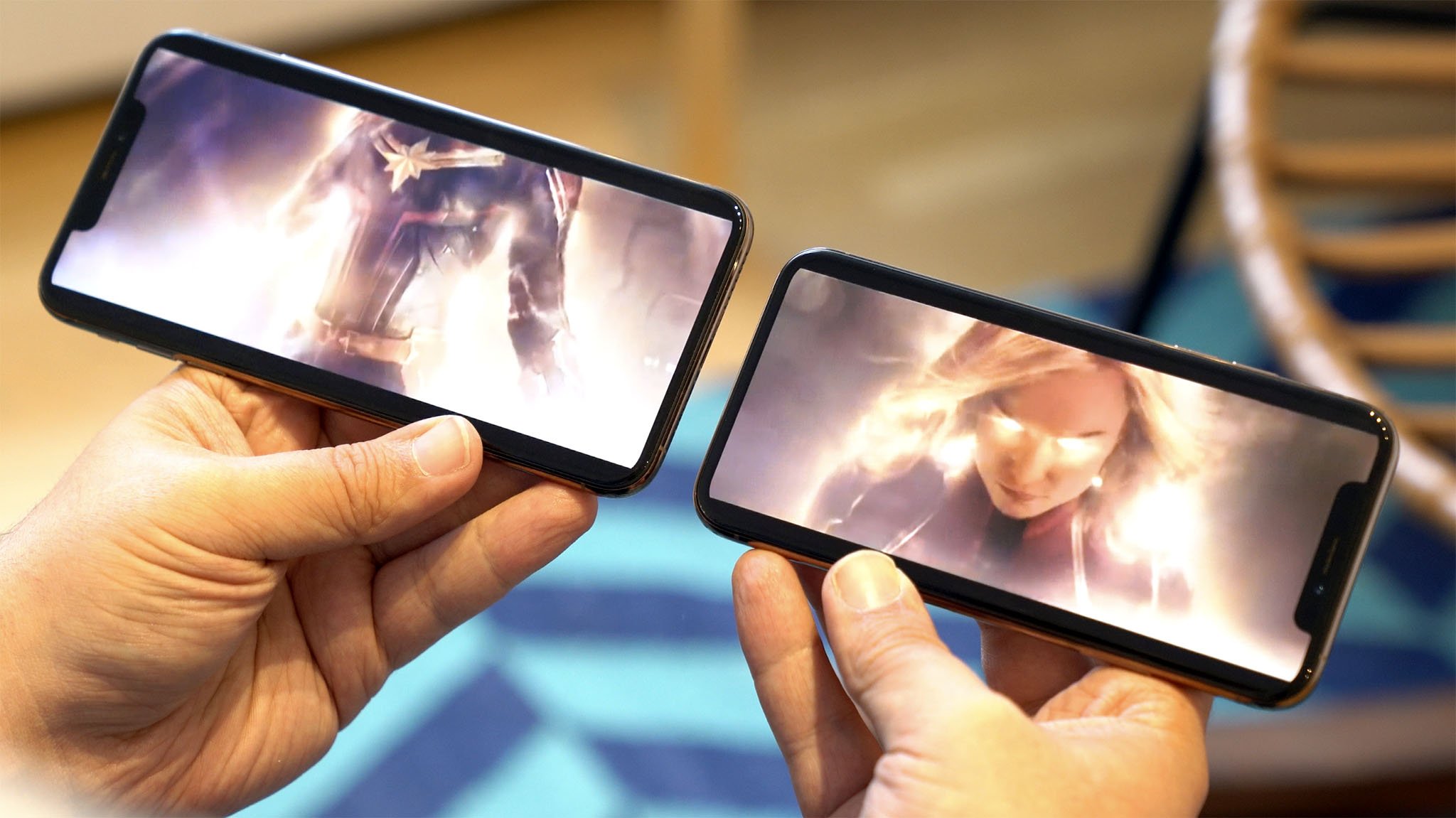When it was launched last year, the iPhone X was Apple's first real advancement in iPhone displays since the iPhone 4. For 2018, Apple is all-in on the X design with three new iPhones (although the iPhone XR doesn't launch until next month).
The iPhone XS is a slight upgrade to the iPhone X, but the iPhone XS Max offers the largest display ever in an iPhone. At 6.5 inches, it offers 18% more screen in a body that's almost identical to the iPhone 8 Plus. The resolution has been bumped up to 1242x2688 pixels, offering a modest 458 ppi pixel density.
On paper, you should definitely upgrade to the iPhone XS Max if you want the best screen, but is the iPhone XS Max the best screen available on an iPhone? Is bigger really better?
Understanding display technology

Apple uses OLED display technology in its new iPhones (including the iPhone X) versus the LCD technology it uses in the iPhone 8 and older devices. The main difference between both technologies is that OLED displays are able to turn on individual pixels, while LCD displays use a backlight underneath the screen. As a result, OLED displays offer much deeper blacks, more vibrant colors, and a higher contrast ratio, but they are known for favoring a blue tint or being red-shifted.
OLED displays aren't new, as Samsung and other companies have been using them in flagships like the Samsung Galaxy Note 9 for years, but Apple first adopted them last year with the iPhone X. LCD still plays a part in Apple's offering, as the new iPhone XR features the iPhone X design with a lower-cost LCD display.
There are plenty of competing display standards, but to test the iPhones, we used the DCI P3 standard. Apple says its displays are calibrated to that standard – which offers a wider range of colors than the sRGB standard it used in the past – but we also tested it against the sRGB standard as a point of reference. We also ensured that Apple's True Tone display was turned off since this will adjust the temperature of the display based on the surroundings.
How much you enjoy a display is subjective, but we can use the following tests to discern which iPhone offers the best display:
iMore offers spot-on advice and guidance from our team of experts, with decades of Apple device experience to lean on. Learn more with iMore!
- Display brightness: Specifically, how bright is the display? We test this with and without the presence of ambient light, as well as with auto brightness turned off. This allows us to see the max brightness the iPhone can achieve, which impacts upon legibility in direct sunlight and the playback of HDR content.
- Color temperature: Ever noticed that some screens a little warmer than others, or some have a slight tint? What we think of as white light is different coming from every screen – try putting two phones next to each other and displaying a fully white background, you'll notice they are slightly different.
- To understand the color temperature of a display, we measure how cool or warm the light is, in degrees Kelvin. Normal daylight temperature is 6500K, which is otherwise known as D65. A color temperature under 6500K means it'll have a yellow hue to it, while above 6500K means it will have a slight blue tint. Displays are rarely calibrated to exactly 6500K, so there'll be some variation, but it only becomes really apparent when you have excessive color temperatures (2000K either side of D65).
- Gamma: This test simply refers to how well the screen can display all the brightness values from black to white. This is an excellent test of contrast, and while there's no standard for gamma, we look for results between 2.1 and 2.2, which is ideal for movie playback. Too high a number means you'll get banding (where it doesn't display a continue color gradient, but a series of steps), while too low will result in a lack of contrast.
- Color gamut: When Apple (or any company) says it supports X percentage of the DCI P3, rec.2020, sRGB (or any other) standard, how accurate are these claims? The answer directly impacts on the overall experience: if you're trying to watch HDR content on your iPhone, it will need to support 100% of that applicable standard for you to get the full experience.
Now we understand the measurements behind displays, how do Apple's new devices stack up? Specifically, is newer really better?
The iPhone XS and iPhone XS Max

The iPhone XS and XS Max have incredible displays. Both support the HDR 10 standard, are rich in detail, and offer a wide spectrum of colors. When we dig into the details, however, we find that the XS Max is more impressive than its smaller sibling and its predecessor, despite a larger display that's harder to manufacture at scale.
Peak brightness

Absolute peak brightness is often high on smartphones, but most of the time this is unnecessary. Where high brightness matters is in direct sunlight, and when set to auto brightness, a phone can bump its display brightness by up to 30% (or more) in the presence of sunlight. All phones do this, and it's designed to make sure your phone isn't too blinding when you pick it up in a dark room, but you're also able to read text on the screen in the bright outdoors.
During this test, we found the iPhone XS Max offered a max brightness of 547 nits, which is boosted up to 677 lumens in bright light. The iPhone XS has a slightly lower 534 nits max brightness which boosts up to 658 nits. Interestingly, the iPhone X splits the two new iPhones with a max brightness of 540 nits and a peak brightness of 669 nits. All three devices are incredibly bright and a high peak brightness allows HDR content to be more immersive.
Color temperature
The results here provide some interesting data, but the simple take away is that the iPhone XS and XS Max screens are near perfect. An acceptable variation for differences in manufacturing processes is 2% and both devices come under that figure. The iPhone XS offers a color temperature of 6388 Kelvin, while the iPhone XS Max is a little colder at 6442 Kelvin. Both are near perfect, and so is the iPhone X which offers a color temperature of 6597 Kelvin. Essentially, this means that a white image will appear as white on any of these iPhones, rather than with a slight orange or blue tint as you might find on other phones.
Gamma
In our testing, the iPhone X delivers a gamma rating of 2.13, which is in the bracket of movie-quality. The iPhone XS Max has a gamma of 2.21 while the iPhone XS has a gamma of 2.18. Both displays are within the realms of near perfect gamma and offer an excellent overall viewing experience. By way of comparison, the Galaxy Note 9 lacks a little contrast (although imperceptibly) with a gamma score of 2.04 and the OnePlus 6 has a score of 2.29 resulting in a slightly over-contrasted experience. These variations aren't noticeable to the human eye as they're so small, but the gamma test does yield interesting results when looking at the wider spectrum of smartphone screens (some screens we've tested have a gamma in excess of 2.8 and aren't very good.)
Color gamut and color accuracy

Gamma, Color Temperature, and Brightness all play a part in how impressive a display looks, but where smartphone screens can be separated is in the accuracy of the colors and the range of colors they support. Color accuracy is a way for us to measure how accurate colors are appearing on the screen. Have you ever noticed a red screen (whether it's your Mac, iPhone, or TV) sometimes looks orange? Similarly, white can be a little off-white and blue can appear a little green. That's down to the color accuracy of your screen and we measure this using the DeltaE2000 formula.

The iPhone X offers an average color error of 4.9, while the iPhone XS is better at 3.6. The iPhone XS Max is the most accurate iPhone to date, with an average color error of 2.4. Anything below 1 is imperceptible to the human eye, while most people can't notice a color error between 1 and 3. Looking at the charts above, the iPhone XS Max and iPhone XS are near perfect when measured against the sRGB standard. The differences are infinitesimal, and although more noticeable against the DCI P3 standard, the displays offer excellent overall color accuracy.
Should you upgrade to the iPhone XS or iPhone XS Max?
The iPhone XS Max is definitely Apple's best screen on an iPhone so far, and given the larger display size, it's our recommended option if you want something bigger and better than your current iPhone X. If you like the size of your iPhone X, the iPhone XS doesn't offer enough to warrant upgrading, unless of course, other features like dual SIM, a new gold color and upgraded cameras are enough to persuade you.

Bigger is definitely better
The iPhone XS Max brings a bigger and better screen than ever before on an iPhone. It offers vibrant colors that are incredibly accurate, deep blacks that offer an immersive experience, and support for the latest standards including HDR 10. If you want the best screen, look no further than the iPhone XS Max.Bottom line: Bigger isn't always better, but it definitely is in this case. Buy the iPhone XS Max for its screen; you won't regret it.One more thing: Get the gold one. It's the best looking.
How important is the screen on your iPhone to you? Would you rather have the bigger iPhone XS Max screen, or the original iPhone X? Let us know in the comments! On your way, check out our iPhone XS and XS Max review!


